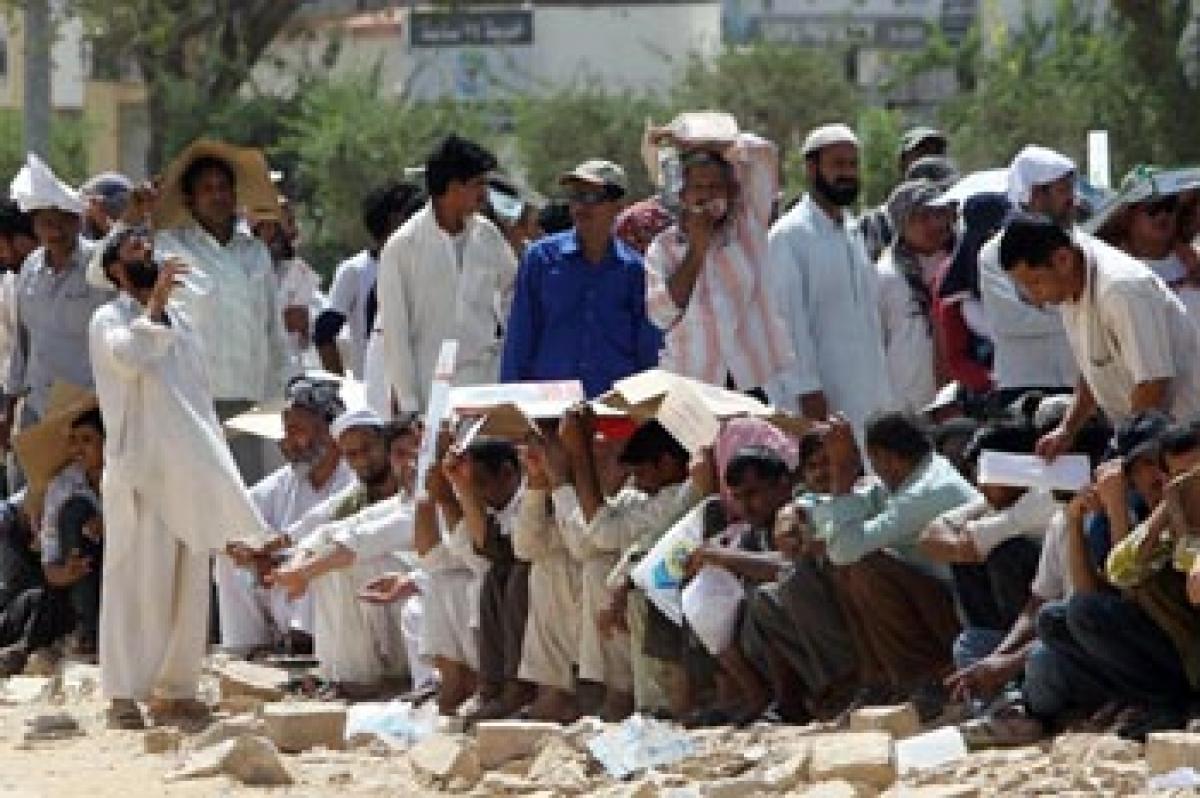Live
- Allu Arjun Released from Chanchalguda Jail, says he respects law
- Jesus is synonymous with sacrifice, forgiveness: Ponnam
- HC announces verdict in Kannada for the first time
- Uttam releases water from Nizam Sagar for Rabi crop
- TG to be Rs 84L cr economy in 10 years: Sridhar Babu
- First TGCHE, V-Cs meet deliberates on higher education roadmap for state
- 2 senior professors to join NALSAR
- Former Principal of SPW College passes away in US
- Hyderabad: Govt out to remove electric poles, transformers on roads across city
- KCR goes into huddle with State legal eagles
Just In

Climate change can result in a significant deterioration of living conditions for people in North Africa and the Middle East and sooner or later, many may have to leave the region, researchers say. More than 500 million people live in the Middle East and North Africa - a region which is very hot in summer and where climate change is already evident.
London: Climate change can result in a significant deterioration of living conditions for people in North Africa and the Middle East and sooner or later, many may have to leave the region, researchers say. More than 500 million people live in the Middle East and North Africa - a region which is very hot in summer and where climate change is already evident.
‘In future, the climate in large parts of the Middle East and North Africa could change in such a manner that the very existence of its inhabitants is in jeopardy,’ said one of the researchers Jos Lelieveld, director at Max Planck Institute for Chemistry in Mainz. The researchers investigated how temperatures would develop in the Middle East and North Africa over the course of the 21st century.
Even if Earth’s temperature were to increase on average only by two degrees Celsius compared to pre-industrial times, the temperature in summer in these regions would increase more than twofold, the results showed. By mid-century, during the warmest periods, temperatures will not fall below 30 degrees at night, and during daytime they could rise to 46 degrees Celsius.
By the end of the century, midday temperatures on hot days could even climb to 50 degrees Celsius. And heat waves could occur ten times more often than they do now, the findings showed. In addition, the duration of heat waves in North Africa and the Middle East would prolong dramatically.
Between 1986 and 2005, it was very hot for an average period of about 16 days, but by mid-century it would be unusually hot for 80 days each year.
At the end of the century, up to 118 days could be unusually hot, even if greenhouse gas emissions decline again after 2040. ‘Climate change will significantly worsen the living conditions in the Middle East and in North Africa. Prolonged heat waves and desert dust storms can render some regions uninhabitable, which will surely contribute to the pressure to migrate,’ Lelieveld said.
In the study published in the journal ‘Climatic Change’, Lelieveld and his colleagues first compared climate data from 1986 to 2005 with predictions from 26 climate models over the same time period. It was shown that the measurement data and model predictions corresponded extremely well, which is why the scientists used these models to project climate conditions for the period from 2046 to 2065 and the period from 2081 to 2100.

© 2024 Hyderabad Media House Limited/The Hans India. All rights reserved. Powered by hocalwire.com







